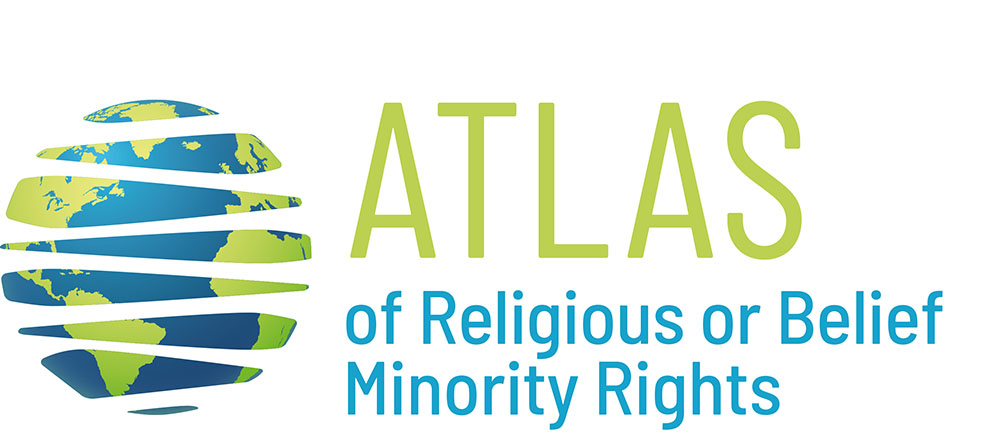HISTORICAL BACKGROUND
During the Ancien Régime, the role of the Catholic Church and that of the “Most Christian King” were intimately linked. Once crowned, the king was no longer like other laypeople. He was invested with a mission of protection towards the Church. This position, theorised by Gallicanism (which is a specific form of jurisdictionalism), conferred upon the king the exercise of temporal authority over the Church of France, including the power to recommend candidates for appointment as bishops and mitred abbots, in accordance with the Pragmatic Sanction of Bourges issued by Charles VII on 7 July 1438. Repealed by Francis I, the Pragmatic Sanction was replaced by the Concordat of Bologna in 1516, which put an end to the election of bishops by chapters and of abbots by their communities.
The agreement of 1516, which remained in force until 1790, allowed the king to appoint religious dignitaries who would subsequently receive papal investiture. During this period, the Assembly of the Clergy drew up a charter of Gallicanism entitled “Declaration of the Four Articles”. It was reinstated by Napoleon in 1801. It continued to be invoked and even applied throughout the 19th and early 20th centuries, before finally giving way to ultramontanism. The Declaration emphasises the independence of the king from ecclesiastical authority, the distinction between temporal and spiritual power and the Pope’s lack of authority over the Princes in temporal affairs.
The Revolution resulted in the secularisation of church property (Decree of 2 November 1789), the creation of a national church subsidised from public funds and integrated into the State apparatus (Civil Constitution of the Clergy of 12 July 1790) and the proclamation of freedom of conscience and worship (Declaration of the Rights of Man and the Citizen of 26 August 1789, Article 10). But the Thermidor convention brought in a strict regime of separation under the terms of a decree of 21 February 1795: non-salaried clergy, a principle of non-recognition of faiths, and the neutrality of public places.
The restoration of religious peace in France, as desired by Bonaparte, involved establishing a system of recognised faiths. It was established by the Law of 18 Germinal year X (8 April 1802, Concordat and Organic Articles) and by two decrees of 17 March 1808 concerning the Jewish faith. It was based both on the laws of the Revolution and on the provisions of the Ancien Régime, while introducing a clear break with the latter by recognising the Protestant churches (Reformed and Lutheran), and the Jewish faith, whereas the Civil Constitution of the Clergy of 12 July 1790 applied only to the Catholic Church.
Religious pluralism was recognised and institutionalised, civil status and marriage were secularised, while divorce became enshrined in the French Civil Code. Faiths were controlled by the state, which paid ministers of religion and re-drew the boundaries of religious dioceses based on the map of départements and communes.
The “Concordat reorganisation” finally united minds by creating a consensus that was difficult to call into question throughout the 19th century. The system of recognised religions was maintained throughout the 19th century thanks to a fragile agreement under the First Empire, an alliance of throne and altar under the Restoration (1814-1830), tensions followed by a certain cordiality under the July Monarchy (1830-1848), as well as alliances and disagreements under the Second Empire. From 1879 with the advent of the Republic of Republicans, a clearly declared anticlericalism gradually led to the end of the system of relations between the French State and religions initiated in the early 19th century.
This had the effect of putting congregations and religious orders under supervision, followed by their expulsion, the abolition of the military chaplaincy, the secularisation of teaching curricula and institutions, the abolition of faculties of theology in state universities, the secularisation of cemeteries, the restoration of divorce, the rupture of diplomatic relations with the Vatican in 1904 and, to top it all, the Law on the Separation of the Churches and the French State of 9 December 1905. Faiths became henceforth organised within a private law context. The Law of 1905 prohibits the State paying salaries and subsidising religions.
The combative laïcité implemented by the Republic of Republicans between 1880 and 1905 progressively faded away to make room for more serene and, above all, more pragmatic relations. Diplomatic relations with the Holy See were restored in 1921 and a right to scrutiny was established the same year for the benefit of the French government when appointing a diocesan bishop. Finally, from 1924, Catholic dioceses became organised as part of diocesan associations, the Catholic Church having refused to organise itself in the form of religious associations, as provided for by the Law of 1905.
About local law in the French Overseas Départements and Territories, it is possible to identify three types of normative regulation applied to religions in the colonies before 1905: French Guiana (Order of 27 August 1828), the territories covered by the law of 18 Germinal year X (Réunion, Martinique, Guadeloupe) and finally those whose religious institutions had no well-defined legal regime. The introduction of the “separation” did not disturb the previous way of thinking about state-religion relations in the colonies and protectorates. The Law of 9 December 1905 was extended to the “Concordat colonies”. Currently, it applies in the départements of Martinique, Guadeloupe and Réunion. Guiana local law has been maintained. However, the legal vacuum that characterised the other territories was not immediately filled after 1905; it would take more than thirty years for the government to come up with a solution. It was only in 1939 that the Minister for the Colonies, Georges Mandel, drew up a text to provide a basic status for faiths and, where appropriate, congregations.
Local law is still enforced in Alsace-Moselle. Following the French Revolution, Catholic, Protestant and Jewish faiths in the Rhine and Moselle départements became subject to the same regime as in “Old France” (Law of 18 Germinal year X for Christian faiths and 1808 decrees for the Jewish faith). The handing over of the départements of the Rhine and Moselle to Germany (Treaty of Frankfurt of 10 May 1871, signed after the French defeat of 1870) marked a first step towards a distinction which would become increasingly apparent between two notions of managing religions. This handover was made to the group of states forming the newly constituted Second German Reich. The départements of the East became an imperial territory (Reichsland) named Alsace-Lorraine (Elsass-Lothringen). After some hesitation, the so-called religious legislation resulting from the law of Germinal year X and the Falloux law (worship, congregation, education) was maintained.
After the return of Alsace-Moselle to France, a law of 17 October 1919 provisionally maintained the measures in force before the disannexation. Article 7 of the Law of 1 June 1924 safeguarded the law on religious communities and congregations. A Council of State notice dated 24 January 1925 confirmed Article 7 of the 1924 Law, meaning “that the Concordat regime, such as it results from the Law of 18 Germinal year X, is still in force in the Rhine and Moselle départements”.
Alsace and Moselle were annexed to the Third German Reich in 1940 de facto in the absence of an appropriate international act endorsing this conquest. German laws and regulations of the time were introduced en masse as a result. In religious matters, the 1801 Concordat and the 1902 convention on establishing a faculty of Catholic theology were unilaterally denounced.
During the liberation, the order of 15 September 1945 on the restoration of Republican legality re-established pre-1940 local legislation. The system of religious communities, the congregations, the status of the faculties of theology and religious education in state schools, as well as the status of denominational primary schools were all restored in the three départements of the East to form part of Republican legality.
Francis Messner
Messner, F. (2019). State and Church in France. In G. Robbers (Ed.), State and Church in the European Union. Baden-Baden: Nomos, pp. 214-216.
RELIGIOUS AND BELIEF MINORITIES IN FRANCE
Two main elements mark the legal framework of religious issues and therefore of religious minorities. The first one relates to history, and more particularly to the influence of Catholicism, upon how the legal framework for religious groups and practices has been designed. This is the case of the notion of worship determined by the pattern of the Catholic religion or the notion of religious leader, which draws largely on the model of the Catholic priest. However, these approaches are not fully suitable for all religious groups.
The second element to be taken into account in explaining the legal situation of religious minorities in France is the political and symbolic importance of secularism as a synonym for neutrality and its legal consequences. For example, financial neutrality, which prohibits the public funding of religion, leads to difficulties for recently established religious groups in financing the construction of places of worship. Moreover, neutrality is also reflected in a tendency to extend bans or restrictions on the wearing of religious symbols, which particularly affects Muslims, who form the second largest religious group in terms of the number of members. This contributes to the positioning of Muslim communities at the center of the public debate on religious minorities in France.
Anne Fornerod
RESOURCES

Data and information concerning religious demography are provided by Todd M. Johnson and Brian J. Grim, eds., World Religion Database (Leiden/Boston: Brill).
General information on minority issues (including some references to religious or belief ones) can be found at the page devoted to France in Minority Rights Group International, World Directory of Minorities and Indigenous Peoples.
The text of the main legislative acts concerning freedom of religion or belief can be found at https://legislationline.org/.
Documents and reports on religious freedom, public worship and religious activities are available (in French) on the Ministry of the Interior’s official webpage, at https://www.interieur.gouv.fr.
See also
https://www.interieur.gouv.fr and https://www.vie-publique.fr.
A report on the French legal system and government policies about freedom of religion (with some references to religious or belief minorities) is provided in Department Reports and Publications - United States Department of State.
For an analysis of the State-religion legal system see
F. Messner, P. H. Prélot, J. M. Woehrling (Eds.), Traité de droit français des religions, Paris: Litec, 2013.
Francis Messner, France, in G. Robbers, & C. W. Durham (Eds.), Encyclopedia of Law and Religion, Leiden: Brill, 2015 (the table of contents is available at https://referenceworks.brillonline.com).
An overview of the main religious minorities in France is provided in
A. L. Zwilling (Ed.), Les minorités religieuses en France. Panorama de la diversité contemporaine, Paris: Bayard, 2019.
INTERACTIVE INFOGRAPHICS
0 respect of international standards
-1 restriction of rights
0 equal treatment of RBMs
-1 high gap between religious majority and minorities

 MENU
MENU CLOSE
CLOSE


